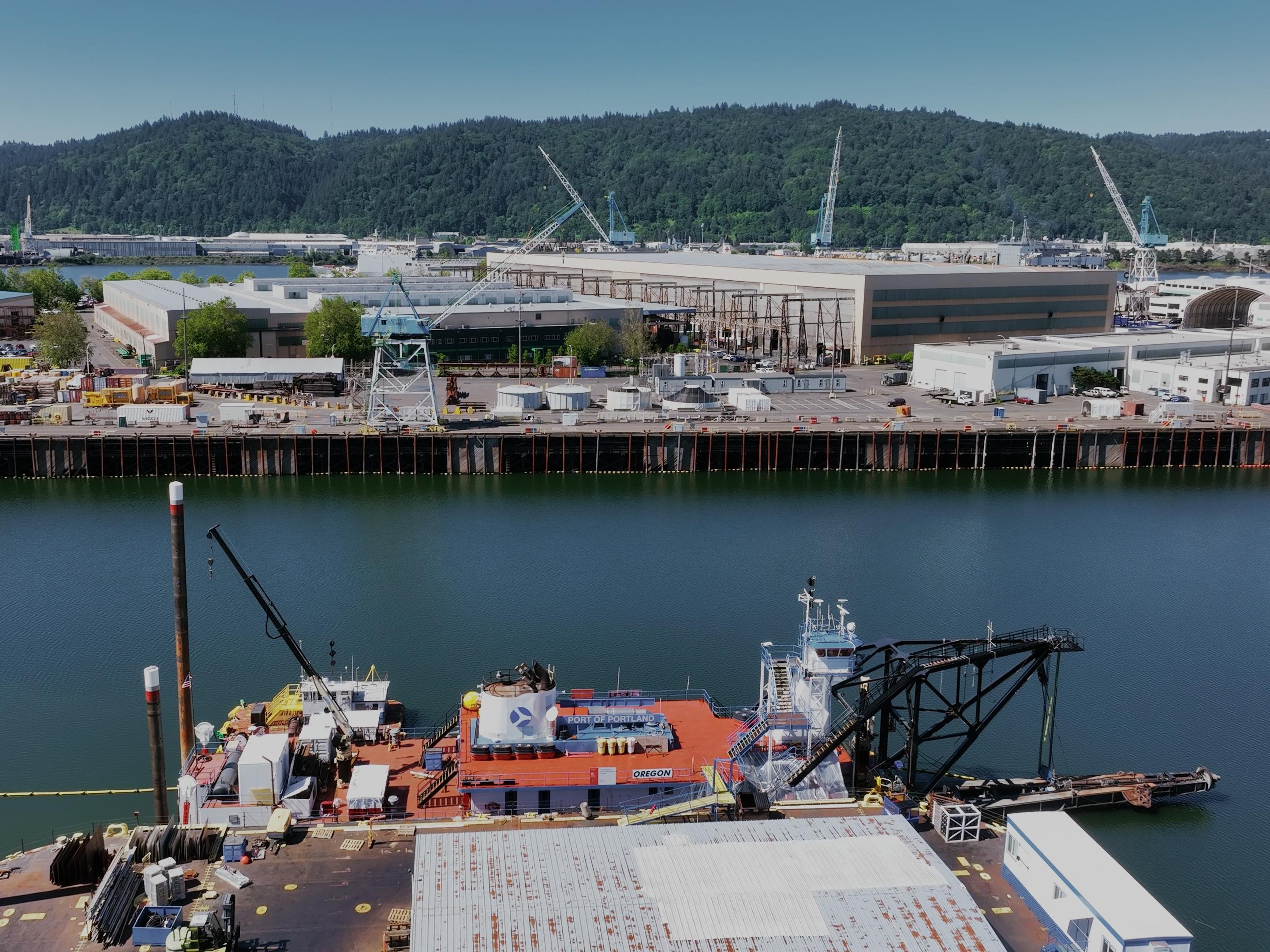The Dredge Oregon: Good for ships, good for trade, good for jobs
This week marked the launch of the Port of Portland’s 2024 dredging season on the Columbia River.
From now until around December, the crew of the Dredge Oregon will perform work that is critically important to thousands of local businesses and jobs in the region – but that’s out of sight and mind for most Oregonians.
During the dredging season, the crew removes massive amounts of material, mostly sand and gravel, built up along the bottom of the Columbia River navigation channel, making sure it’s deep enough and wide enough for ships to safely and efficiently navigate from Portland to Astoria.
As a trade-dependent state, our marine highways play an important role in supporting the region’s economic health — and with nine ports on the Columbia River (and 36 total throughout the Columbia-Snake River system), the Dredge Oregon and its crew are critical for success. In 2020, for example, $22 billion worth of cargo moved along the Columbia River, supporting countless businesses and tens of thousands of jobs throughout the Pacific Northwest.
When it’s out on the river, the dredge operates 24 hours a day, six days per week, with a hardworking crew of about 45 members. By the end of the season, the Oregon will have scooped up over 2 million cubic yards of sediment from the riverbed and deposited it elsewhere. That’s enough material to fill 700 Olympic-size swimming pools.
Partnership is part of the process
Dredging is an age-old process of economic importance all over the world. Here in Oregon, the Army Corps of Engineers surveys the Columbia River throughout the year to find spots where sediment has settled and made the channel too shallow for commercial ships. The Dredge Oregon then travels to those places – including eight or nine spots this year, some relatively close to Portland and others just shy of the Pacific Ocean – and restores the channel to 43 feet deep and 600 feet wide over the course of the season.
While the Port’s Dredge Oregon is not the only boat dredging the river – the Corps operates two of their own dredges and contracts for another each season – it’s the only one that can remove material from the riverbed and pipe it up to 2 miles onto dry land or place it along beaches.



Port’s history with dredging as old as the Port itself
The Port’s history with dredging is as old as the Port itself.
The Oregon Legislature established the Port of Portland in 1891 specifically to dredge a navigation channel from Portland to the sea. Early state and city leaders also invested in roads, railways and runways to position the city as an international trade hub. Portland would be a very different (and smaller) city today without annual river dredging.
Over the years, dredging has not only shaped the river bottom to accommodate increasing large cargo ships. It’s also shaped the region’s geography, with dredged materials being used as fill to develop places like Swan Island, Oak’s Park, a Multnomah Falls parking lot, PDX and even the Nike campus.
And when Mount St. Helens erupted in 1980, debris clogged the Columbia River and stopped maritime trade in its tracks, until the Dredge Oregon was able to help clear the channel – removing enough sediment to cover a football field to a height of nearly 7 miles.
The Oregon is among a long line of dredges the Port has operated over the years. From the 1890s through 1965, the Port went through six dredge vessels over the course of 67 years. The next 64 years of the Port’s dredging has been solely accomplished by the Dredge Oregon, making it by far the longest serving of any Port vessel.
So it should come as no surprise it’s in great need of a replacement, according to Don Tjostolvson, the Dredge Oregon’s navigation director.
“It has been a real workhorse,” Tjostolvson said.








